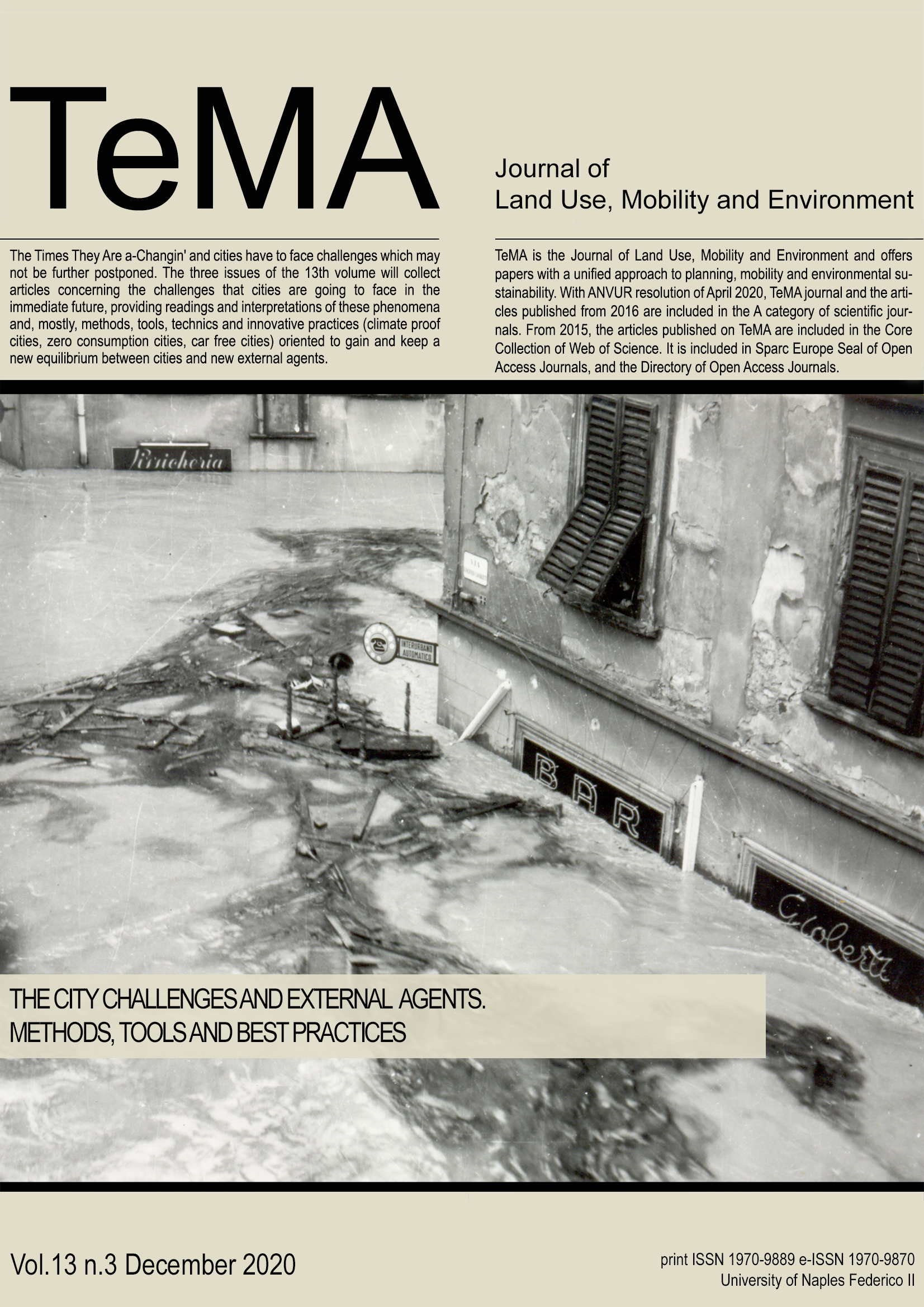Strategies and guidelines for urban sustainability: the explosion of micromobility from Covid-19
DOI:
https://doi.org/10.6092/1970-9870/7241Keywords:
Urban sustainability, soft mobility, micromobility, Covid-19Abstract
Starting from the relationship between urban planning and mobility management, TeMA has gradually expanded the view of the covered topics, always following a rigorous scientific in-depth analysis. This section of the Journal, Review Notes, is the expression of a continuous updating of emerging topics concerning relationships among urban planning, mobility and environment, through a collection of short scientific papers written by young researchers. The Review Notes are made of five parts. Each section examines a specific aspect of the broader information storage within the main interests of TeMA Journal. In particular: the Town Planning International Rules and Legislation Overview section aims at presenting the latest updates in the territorial and urban legislative sphere. Urban patterns and their intrinsic relationships have completely changed since Covid-19. In particular, the mobility subsystem has undergone a significant change, inducing users to use "soft" such as micromobility. Micromobility is now on the rise, especially in large cities, but at the same time the lack of dedicated routes pushes researchers and technicians in the area to find solutions capable of providing rules to users. This section examines the legislative decrees issued by the Italian government to promote a sustainable mode of travel for cities such as micromobility.Downloads
Downloads
Published
How to Cite
Issue
Section
License
Authors who publish in this journal agree to the following:
1. Authors retain the rights to their work and give in to the journal the right of first publication of the work simultaneously licensed under a Creative Commons License - Attribution that allows others to share the work indicating the authorship and the initial publication in this journal.
2. Authors can adhere to other agreements of non-exclusive license for the distribution of the published version of the work (ex. To deposit it in an institutional repository or to publish it in a monography), provided to indicate that the document was first published in this journal.
3. Authors can distribute their work online (ex. In institutional repositories or in their website) prior to and during the submission process, as it can lead to productive exchanges and it can increase the quotations of the published work (See The Effect of Open Access)


